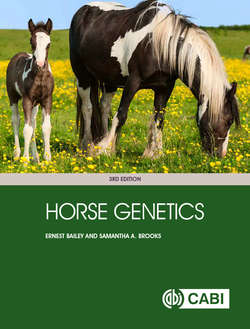Читать книгу Horse Genetics - Ernest Bailey - Страница 51
На сайте Литреса книга снята с продажи.
Mutation versus variant
ОглавлениеSo far, we have used the terms “variant” and “mutation” interchangeably. This is common in genetics although the terms do have subtly different meanings. Variation denotes that different forms exist for a gene. A major theme for this book is to understand and appreciate the extent of genetic variation in the horse. The term “mutation” is a charged term, carrying the concept of normal DNA sequences versus those which are not normal. In the early 1900s scientists coined a term “wildtype” to denote what they considered to be the normal variant in a population. The alternative was mutation. The term wildtype is still occasionally used. The term “mutation” is frequently used when referring to disease-causing variants. In any case, the term mutation is appropriate at the moment when the mutational event is observed, for example, as a change in DNA sequence between parents and offspring.
While we now think of the chestnut allele as a variant, studies of ancient DNA plus studies of the function of the MC1R protein demonstrated that the ancestors of modern horses had black pigment and a mutation of the MC1R gene led to the creation of the chestnut variant. As noted in earlier chapters, early breeders liked some of these color variants and selected for them such that they have become characteristic of breeds. Chestnut is very common among Saddlebred horses. Likewise, gray coat color is the consequence of an ancient mutation but now very common among Arabian horses and Lippizan horses. We will follow the practice of calling the alleles for chestnut and gray as variants and not mutations although their origins were as mutations of what could be called the wildtype alleles.
